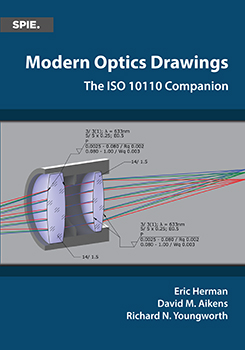
Richard Neil Youngworth, Ph.D. is an experienced optical designer and engineer with industrial expertise that spans numerous facets of the optics field including metrology, design, manufacturing, and analysis. He is considered an international expert on producibility and tolerance analysis of optical components and systems. He has spent a large portion of his industrial career working on optical systems in the challenging transition from ideal design to successful volume manufacturing.
Dr. Youngworth has authored and delivered sundry papers, talks, and lectures on optical design and engineering. He currently teaches SPIE short courses on “Cost-Conscious Tolerancing of Optical Systems” and “Practical Optical System Design”. He maintains additional professional society activities and leadership positions with OSA and SPIE, and provides leadership and support on standards activities with the Optics and Electro-Optics Standards Council (OEOSC).
Dr. Youngworth is the founder and Chief Engineer of Riyo LLC, an optical design and engineering consulting firm. Through Riyo LLC he is also a Staff Technical Consultant for Lambda Research Corporation. With Riyo LLC, he is lead optical design and analysis for internal work and customer programs, manufacturing and technology development support, and also does sales and marketing for the company. Before forming Riyo LLC, Dr. Youngworth was a sole proprietor with exclusive representation as Director of Optical Engineering for Light Capture, Inc., a Senior Optical engineer for Ball Aerospace & Technologies Corp., and Research Associate at Eastman Kodak. He has a B.S. in electrical engineering from the University of Colorado at Boulder and earned his Ph.D. in optics at the University of Rochester by researching tolerance analysis of optical systems.
Please feel free to send an e-mail for further information.
Dr. Youngworth has authored and delivered sundry papers, talks, and lectures on optical design and engineering. He currently teaches SPIE short courses on “Cost-Conscious Tolerancing of Optical Systems” and “Practical Optical System Design”. He maintains additional professional society activities and leadership positions with OSA and SPIE, and provides leadership and support on standards activities with the Optics and Electro-Optics Standards Council (OEOSC).
Dr. Youngworth is the founder and Chief Engineer of Riyo LLC, an optical design and engineering consulting firm. Through Riyo LLC he is also a Staff Technical Consultant for Lambda Research Corporation. With Riyo LLC, he is lead optical design and analysis for internal work and customer programs, manufacturing and technology development support, and also does sales and marketing for the company. Before forming Riyo LLC, Dr. Youngworth was a sole proprietor with exclusive representation as Director of Optical Engineering for Light Capture, Inc., a Senior Optical engineer for Ball Aerospace & Technologies Corp., and Research Associate at Eastman Kodak. He has a B.S. in electrical engineering from the University of Colorado at Boulder and earned his Ph.D. in optics at the University of Rochester by researching tolerance analysis of optical systems.
Please feel free to send an e-mail for further information.
View contact details



